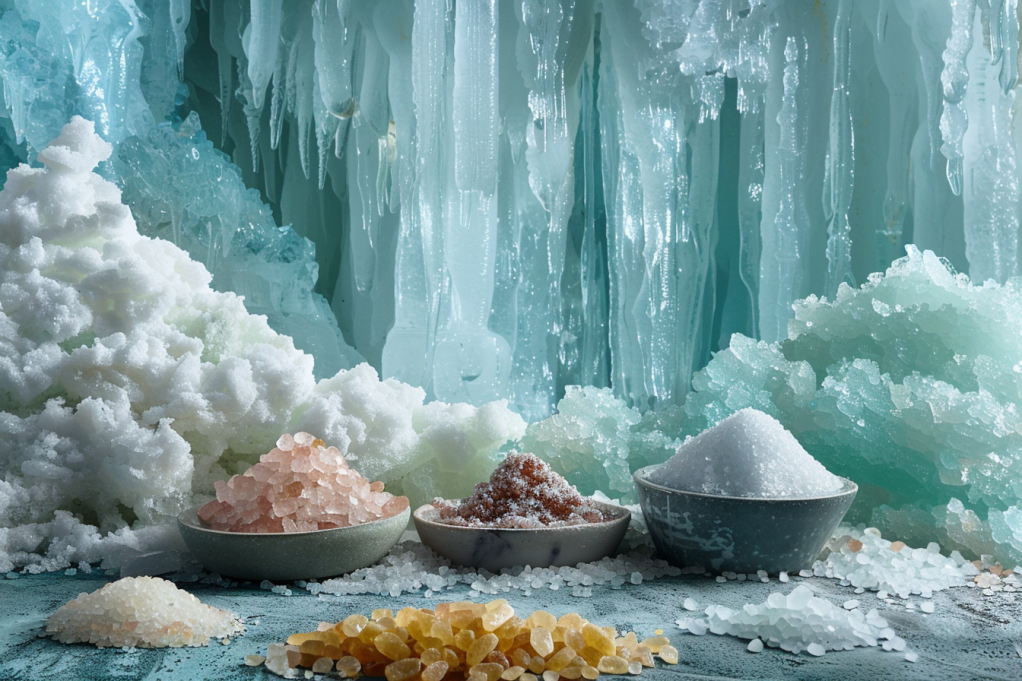The Chemical Composition of Dead Sea Salt

The Dead Sea is one of the world's most remarkable natural wonders, known not only for its hypersalinity—allowing visitors to float effortlessly on its surface—but also for the therapeutic qualities of its mineral-rich salt. Understanding the chemical composition of Dead Sea Salt is not merely an academic pursuit; it has significant implications for industries ranging from cosmetics to alternative medicine, making it an area of interest for both scientists and entrepreneurs alike.
The Dead Sea's extraordinary properties have long intrigued researchers. Through analyzing its unique chemical makeup, we gain insight into how its minerals can be harnessed for their health and beauty benefits, thereby adding economic and therapeutic value to the salt harvested from its waters.
Key Takeaways
- Unique Properties
- High salinity with therapeutic minerals, distinct from regular sea salt.
- Historical Use
- Used in ancient treatments and studied for therapeutic effects.
- Major Minerals
- Contains magnesium, calcium, sodium, potassium, and bromide.
- Mineral Benefits
- Enhances skin hydration, reduces inflammation, and supports skin health.
- Therapeutic Uses
- Used for skin ailments and in spa and wellness products.
- Environmental Impact
- Declining water levels due to human activities threaten sustainability.
- Harvesting Methods
- Moving towards sustainable extraction to minimize environmental impact.
- Consumer Products
- Essential in skincare and bath products, emphasizing authenticity.
- Industry Outlook
- Potential for growth with responsible practices and research.
Historical Significance of the Dead Sea
Immersed in history, the Dead Sea has held cultural and medicinal importance for millennia. Historical records and texts, including those from ancient civilizations such as the Egyptians and Romans, document the use of its salts for various treatments and rituals.
The scientific community has been studying the mineral contents of the Dead Sea for decades. Researchers have observed notable therapeutic effects which correlate with the mineral-rich composition of the sea. These findings have only fueled more interest in the Dead Sea's potential benefits.
What Makes Dead Sea Salt Unique
The Dead Sea can reach a salinity of 30% which is massive compared to the 3.5% of most oceans. This salinity makes for an extremely mineral-rich body of water, which has unparalleled benefits. There are stark differences when comparing Dead Sea salt to regular sea salt:
- Dead Sea salt has a lower content of sodium chloride.
- A greater concentration of other minerals, such as magnesium, potassium, calcium, and bromide.
The chemical composition of Dead Sea Salt is what makes it so special and beneficial for multiple skin conditions and hair care.
Here’s a breakdown of its mineral content
- Magnesium: Helps in detoxifying and cleansing the epidermis, encouraging cell metabolism.
- Calcium: Has a significant role in strengthening cell membranes and cleansing pores.
- Sodium: Assists in balancing skin moisture and improves its absorption of other ingredients.
- Potassium: Aids in regulating moisture levels in the skin and body.
- Bromide: Soothes the skin, relaxes body muscles, and calms nerves.
Each of these minerals, among others found in the sediments, plays a vital role in the overall chemical symphony that gives Dead Sea salt its reputed therapeutic properties.
Benefits of Dead Sea Salt Minerals
The minerals from the Dead Sea are not just ordinary compounds; they hold secrets to skin health and overall wellness:
- Magnesium: Crucial for skin hydration and reducing inflammation, it also helps to improve function and preservation of the natural skin barrier.
- Calcium & Potassium: These minerals are involved in the maintenance and integrity of cell walls and in regulating electrolyte balance, which influences hydration and skin nourishment.
Therapeutic Uses of Dead Sea Salt
In dermatological contexts, Dead Sea salt has been used to alleviate conditions such as psoriasis, eczema, and acne. Its high mineral content is recognized for its ability to naturally cleanse, exfoliate, and replenish the skin.
Furthermore, the salts are a staple in spa treatments around the world, featured in products like bath salts, body scrubs, and facial masks. They not only offer relaxation and stress relief but are also cherished for their skin-rejuvenating properties.
Environmental Impact on Dead Sea Salinity
The Dead Sea has evolved over the ages, with its composition being subject to both natural and human-induced changes. Environmental factors such as climate variations have altered the evaporation rates, while human activities including mineral extraction have impacted the sea's mineral balance.
Underlining these challenges are the concerns about long-term sustainability
- Declining water levels due to reduced inflow from the River Jordan.
- Industrial exploitation affects the mineral composition and availability.
Harvesting Dead Sea Salt
Salts from the Dead Sea are harvested using methods that have evolved from ancient, labour-intensive processes to more efficient, mechanized procedures. Today, the focus is on sustainable practices that mitigate environmental impact, such as:
- Minimal-intervention harvesting techniques
- Controlled extraction to prevent ecological harm
Dead Sea Salt in Consumer Products
The health and beauty industries capitalize on the reputation of Dead Sea salt by incorporating it into a wide range of products, including:
- Skincare items like moisturizers and serums
- Bath products such as soaks and body washes
However, the authenticity of these products remains paramount. Consumers seek the genuine benefits of Dead Sea minerals, and products' origins and mineral compositions should be verifiable.
Dead Sea salt is a compound of great historical significance and modern-day therapeutic interest. Looking ahead, research into its composition and effects will likely continue to reveal new applications and benefits. This has the potential to bolster the Dead Sea salt industry, provided that responsible harvesting and product transparency remain at its core.



